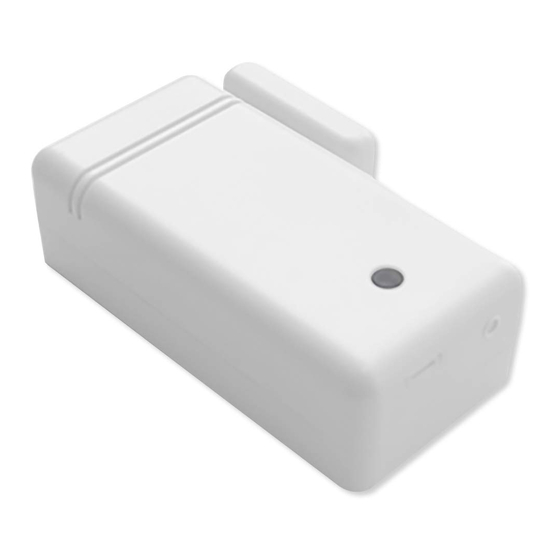
Advertisement
Quick Links
IQ SHOCK-S QUICK INSTALL GUIDE
CHOOSE
STEP
1
INSTALLATION
LOCATION
✓
Sliding
glass
doors
Windows
SPECIFICATIONS
Frequency: 319.5MHz
Battery: 3V lithium CR123A
Magnet gap: 1 inch max
Operating Temperature: 32°-110°F (0°-45°C)
Operating Humidity: 5-85% RH non-condensing
Compatible with Qolsys control panels
Supervisory signal interval: 60 min (approximately)
Potentiometer: Shock sensitivity adjustment
This is a quick guide for experienced installers only. Refer to http://dealers.qolsys.com (login required)
Exterior Doors
✓
✓
✓
✓
DIP
STEP
2
SWITCH
CONFIGURATION
Three dip switches allow you to customize the behavior of this device:
DS#1 - Test Mode:
ON:
Enables sensitivity test
mode.
Please note, when test mode is
enabled (ON) the IQ Shock will
NOT transmit signals to the IQ
Panel. This mode is only used
for initial installation of the
shock sensor.
OFF: Disables sensitivity
test mode.
DS#2 - Pre-Warn:
ON: Enables pre-warn
sounder and red LED.
OFF: Disables pre-warn
sounder and red LED.
DS#3 - Reed Switch:
ON:
Enables reed switch.
OFF:
Disables reed switch.
IMPORTANT NOTE:
The IQ Shock is intended to be installed on doors with or without glass inserts and
on window frames but not on the actual glass surface.
SENSOR
MIN
BATTERY
MAX
BUZZER
ON
LED
1
2
3
MAGNET
TAMPER
SWITCH
POTENTIOMETER
SHOCK
SENSOR
DIP
SWITCHES
Advertisement

Summary of Contents for QOLSYS IQ SHOCK-S
-
Page 1: Specifications
The IQ Shock is intended to be installed on doors with or without glass inserts and on window frames but not on the actual glass surface. Potentiometer: Shock sensitivity adjustment This is a quick guide for experienced installers only. Refer to http://dealers.qolsys.com (login required) - Page 2 FCC ID: 2ABBZ-RF-ARSHK TechSupport@Qolsys.com Qolsys Product #: QS1138-840 IC: 11817A-RFARSHK This device complies with part 15 of the FCC Rules. Operation is subject to the following two conditions: (1) This device may not cause harmful interference, and (2) this device must accept any interference received, including interference that may cause undesired operation.














Need help?
Do you have a question about the IQ SHOCK-S and is the answer not in the manual?
Questions and answers